

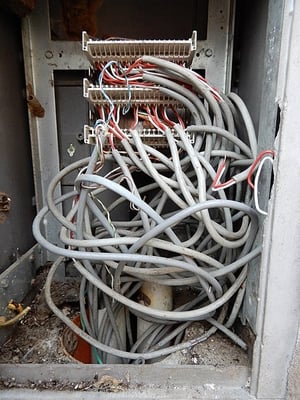
You’re greeted with a cable salad. A tangled birds nest that ties together critical equipment that keeps telephone, internet, or cellular available. Your day just got a whole lot longer, as you now must carefully and individually trace each cable from its source. You don’t have the time to tag and organize each cable, so you complete your maintenance, descend, and leave the disaster-waiting-to-happen for the next poor soul who has to perform any major work on the equipment.
This story isn’t uncommon. If you’re a telecom worker, network engineer, building automator, industrial electrician, or anyone that deals with a high density of cables you’re probably familiar with cable catastrophes and the migraines they impart.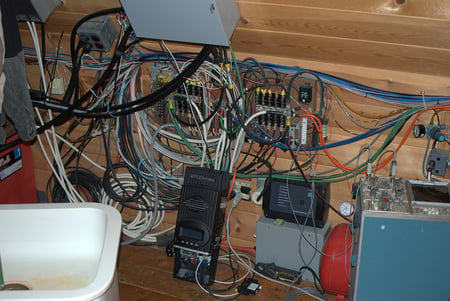
In the world of traditional data center networking, the solution is simple. Rack and infrastructure vendors offer cable management solutions that make handling large quantities of cables a breeze.
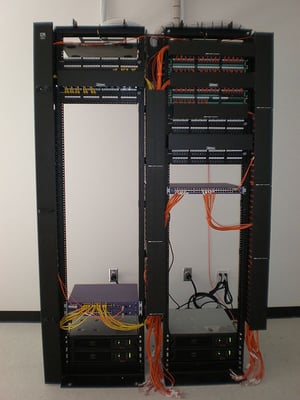
But for industrial networks, or other networks that need to operate in restrictive conditions with limited space, DIN rails can be used to conveniently and effectively mount equipment including network switches.
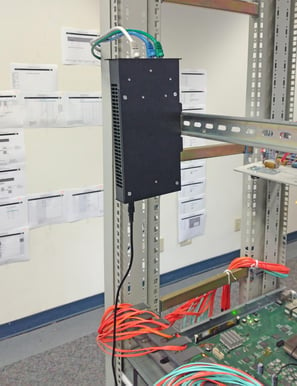
We’ve talked about tapping industrial networks in the past, but how do we get a device that normally fits into a traditional data center network into an industrial network?
DIN Rails are a mounting system used to secure or install electrical devices to the network. The goal in this environment is to have as few moving parts as possible to minimize the risk of a cable coming unplugged or disrupting the network.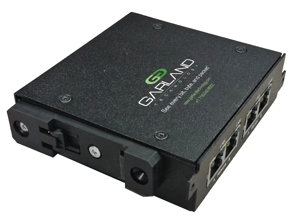 In order to secure electrical components such as routers, switches, firewalls and monitoring appliances to a din rail, the component itself has to have a DIN rail mount.
In order to secure electrical components such as routers, switches, firewalls and monitoring appliances to a din rail, the component itself has to have a DIN rail mount.
Garland Technology also has an assortment of industrial based TAP accessories, including DIN rail mounts for network TAPs, DC-DC power converters and screw power lock connectors provide extra assurance power supplies that stay connected to help overcome the connectivity and environmental challenges you may face.
Looking to add a visibility solution to your industrial deployment, but not sure where to start? Join us for a brief network Design-IT consultation or demo. No obligation - it’s what we love to do.
If the inline security tool goes off-line, the TAP will bypass the tool and automatically keep the link flowing. The Bypass TAP does this by sending heartbeat packets to the inline security tool. As long as the inline security tool is on-line, the heartbeat packets will be returned to the TAP, and the link traffic will continue to flow through the inline security tool.
If the heartbeat packets are not returned to the TAP (indicating that the inline security tool has gone off-line), the TAP will automatically 'bypass' the inline security tool and keep the link traffic flowing. The TAP also removes the heartbeat packets before sending the network traffic back onto the critical link.
While the TAP is in bypass mode, it continues to send heartbeat packets out to the inline security tool so that once the tool is back on-line, it will begin returning the heartbeat packets back to the TAP indicating that the tool is ready to go back to work. The TAP will then direct the network traffic back through the inline security tool along with the heartbeat packets placing the tool back inline.
Some of you may have noticed a flaw in the logic behind this solution! You say, “What if the TAP should fail because it is also in-line? Then the link will also fail!” The TAP would now be considered a point of failure. That is a good catch – but in our blog on Bypass vs. Failsafe, I explained that if a TAP were to fail or lose power, it must provide failsafe protection to the link it is attached to. So our network TAP will go into Failsafe mode keeping the link flowing.
Single point of failure: a risk to an IT network if one part of the system brings down a larger part of the entire system.
Heartbeat packet: a soft detection technology that monitors the health of inline appliances. Read the heartbeat packet blog here.
Critical link: the connection between two or more network devices or appliances that if the connection fails then the network is disrupted.